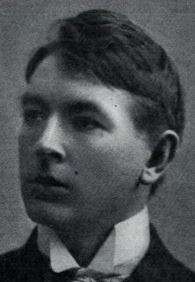Olaf Holtedahl
| Professor Olaf Holtedahl | |
|---|---|
 Olaf Holtedahl | |
| Born | June 24, 1885 |
| Died | 26 August 1975 (aged 90) |
| Institutions | University of Oslo |
| Notable awards | Fellow of the Royal Society[1] |
Prof Olaf Holtedahl ForMemRS[1] FRSE (24 June 1885 – 26 August 1975) was a Norwegian geologist, Dr.philos. in 1913, senior lecturer at the University of Oslo in 1914, and Professor of geology there from 1920 to 1956.[2][3][4][5][6][7][8][9]
Career
He was born in Oslo, Norway the son of Arne H. Holtedahl, superintendent of pauper administration, and his wife, Mathilde Madsen. [10]
Around 1903 he did his obligatory military service at Gardemoen, just north of Oslo, and here met Captain Gunnar Isachsen who greatly influenced him, and first inspired his interest in polar regions. In 1909, Isachsen invited Holtedahl to join him in explorations of Spitsbergen as official geologist of the group.[11]
He studied Geology at the University of Oslo, graduating in 1909 and receiving a doctorate in 1913. Staying in the university as staff he received his professorship in 1920.
Holtedahl was among the last of a generation of geologists that mastered the subject in all its breadth. He delivered a significant contribution, not only in Norway but also for large areas of the Arctic and Antarctic. His first geological work dealt with the Oslo Rift in kambrosilur, and he was part of the 1909-11 expeditions to Svalbard, 1914-17 he explored Lapland Geology, 1918, he worked at Bear Island. In 1921 he led a Norwegian expedition to Novaya Zemlya and was 1927-28 with the Lars Christensen's Antarctic expeditions, from these expeditions he edited the scientific results.[2] He was Doctoral advisor of Professor Bjørn G. Andersen, and was the main initiator of his Quaternary geological works.[12]
In the Second World War he was a member of the Norwegian resistance movement.
He died in Oslo on 26 August 1975.
Family
He married Tora Gurstad in 1912.[13] Their children include Professor of geology Hans Holtedahl[2] (1917–2001).
Honors and awards
- Wollaston Medal (1951)
- Elected member of the Royal Society in 1961[1][2]
References
- 1 2 3 Størmer, L.; Stormer, L. (1976). "Olaf Holtedahl 24 June 1885 -- 26 August 1975". Biographical Memoirs of Fellows of the Royal Society. 22: 193. doi:10.1098/rsbm.1976.0008.
- 1 2 3 4 Bryhni, Inge. "Olaf Holtedahl Extended Biography". Norsk Biografisk Leksikon (in Norwegian). Kunnskapsforlaget. Retrieved 2012-11-14.
- ↑ Holtedahl, Olaf (1907): Alunskiferfeltet ved Øieren, Norges Geologiske Undersøkelser nr. 45 (Aarbog for 1907)
- ↑ Holtedahl, Olaf (1916): Zur Kenntnis der Karbonablagerungen des westlischen Spitsbergens, VSK Skr. I (del 1: 1911 nr. 10, 1911, del 2: 1912 nr. 23, 1913)
- ↑ Holtedahl, Olaf (1916): The Strophomenidae of the Kristiania region, VKS Skr. I 1915 nr. 12
- ↑ Holtedahl, Olaf (1918): Bidrag til Finmarkens geologi, Norges Geologiske Undersøkelser nr. 84
- ↑ Holtedahl, Olaf (1929): On the geology and physiography of some Antarctic and sub-Antarctic islands. Sci. Res. Norwegian Antarctic Exped. 1927-1928 and 1928-1929. 3. Norske Videnskaps-Akademi i Oslo, 1-172
- ↑ Olaf Holtedahl Biography on Store Norske Leksikon
- ↑ l. h. (2009). "Norges Geologi. By Olaf Holtedahl. 2 vols., 1118 pp., with 485 text-figures, 24 plates, including two maps in colour—a geological map and a glacial map, scale 1/1 million. Norges Geologiske Undersøkelse, Nr. 164, Oslo, 1953. Price 70 kroner". Geological Magazine. 92: 87. doi:10.1017/S0016756800063366.
- ↑ BIOGRAPHICAL INDEX OF FORMER FELLOWS OF THE ROYAL SOCIETY OF EDINBURGH 1783 – 2002 (PDF). The Royal Society of Edinburgh. July 2006. ISBN 0 902 198 84 X.
- ↑ http://rsbm.royalsocietypublishing.org/content/roybiogmem/22/193.full.pdf?
- ↑ Mangerud, Jan (2011). "Geoprofilen: Bjørn G. Andersen – En bauta i norsk geologi". Geoforskning (in Norwegian). Oslo. 6/2011 (6). Retrieved 2012-11-14.
- ↑ BIOGRAPHICAL INDEX OF FORMER FELLOWS OF THE ROYAL SOCIETY OF EDINBURGH 1783 – 2002 (PDF). The Royal Society of Edinburgh. July 2006. ISBN 0 902 198 84 X.
External links
- Olaf Holtedahl: 24. juni 1885 — 26. august 1975, in the Norwegian Journal of Geography, Volume 30, Issue 1, 1976
- Olaf Holtedahl 24. juni 1885 — 26. august 1975 Elected For Mem. R. S. 1961 by L. Størmer
- Olaf Holtedahl Biography in Store Norske Leksikon
- Olaf Holtedahl Biography at Norsk Polarhistorie
- Geology of Norway: Maps in cooperation with Bjørn G. Andersen